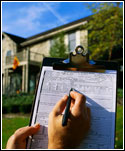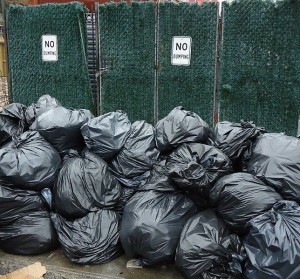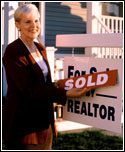Do Sellers Have to Tell What’s Wrong With Their Property?
Thursday, January 29th, 2015 You’re looking to buy the perfect Spruce Grove, Stony Plain, Parkland County or Edmonton area house, or condo, or acreage. You certainly don’t want a property that has anything wrong with it, but the law will protect you …. won’t it?
You’re looking to buy the perfect Spruce Grove, Stony Plain, Parkland County or Edmonton area house, or condo, or acreage. You certainly don’t want a property that has anything wrong with it, but the law will protect you …. won’t it?
Well. Maybe, maybe not.
As a buyer, you should be aware that the rule of “caveat emptor” (buyer beware) applies to the purchase of real estate in Alberta. That means it is up to the buyers to satisfy themselves that the property is right for them in every way, including its physical condition (which is why I always recommend that buyers get a home inspection). Believe it or not, sellers have no legal responsibility to tell you everything that’s wrong with their property. They do not, for example, have to point out to you the leaky bathroom faucet, or the stains on the carpet, or the squeaky stair third from the bottom.
So, what IS the seller’s responsibility? What DO they have to tell you?
According to the Alberta Real Estate Association, sellers in Canada only have to tell you about material latent defects. These are defects that meet all three of these conditions:
- The defect is not visible or discoverable through a reasonable inspection. That’s what makes it “latent”. (A “patent” defect, on the other hand, is out in the open. These are things like deteriorated roof tiles or cracks in the foundation. Sellers don’t have to tell you about these, because the assumption is that you or your home inspector will discover them for yourselves. BUT sellers had better not try to cover these up either, or they risk being charged with fraud.)
- The defect is material (that is, it’s fundamental to the property; it’s serious and it matters!). This type of deficiency may make the property dangerous to occupants or unfit for habitation. Think about a building that is structurally unsound, or constructed on contaminated soil, or full of toxic mould. You may recall the Fort McMurray Penhorwood condos in the news since 2011. These buildings, which are now being demolished, were in such dire shape that owners and residents could not even return to the buildings to retrieve personal possessions. Definitely a “material” defect.
- The defect is known to the seller. (Tough to prove this….)
Of course, legal stuff is rarely black and white, or cut and dried, or whatever other metaphor you choose! Plenty of “what ifs” and gray areas here.
- As noted, material latent defects are those that make a property dangerous or unfit to live in. But they can also include circumstances that make the property unfit for the buyer’s purpose. If the buyers’ purpose is to live in a home that has not been the scene of a crime, they would not be too happy to later discover that their dream home had been the scene of a murder or used as a grow op! (See my blog article “Murder, Mayhem and Seller’s Disclosure”).
- A material latent defect might also exist if:
- the defect is very expensive or difficult to repair (like the Fort McMurray condos).
- the sellers have received notice from their municipality that the defect MUST be remedied (and they haven’t done so); for example, a permanent or integral part of the building encroaching on public land.
- the seller does not have appropriate permits for the property, such as finishing the basement or constructing a large deck or garage without permission.
- the seller does not reveal that the basement floods every time it rains, or that inadequate wiring has previously caused a fire. (Note though, that if the problem occurred in the past but has since been adequately repaired, the seller doesn’t have to mention it. See what I mean about gray areas?)
What recourse do buyers have if they feel they’ve been victimized?
The buyers would have to sue the sellers and prove in court that all three conditions of material latent defects have been met. Damages could then be awarded for the cost of repairing the defect and damage caused by it, and maybe for loss of use and enjoyment of the property. However, the chances of getting reparation, especially in a timely fashion? Ask the poor hapless Fort McMurray condo owners! So much better, as a buyer, to do your homework! Communicate clearly what you will and will not accept, examine the property carefully, ask a million questions, and get a professional home inspection!
As an Alberta REALTOR®, I can help you avoid costly and stressful purchase situations. Call or text me at 780-910-9669, email me at barry@barryt.ca, or contact me here.





